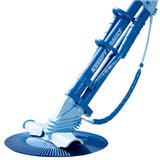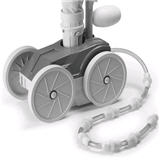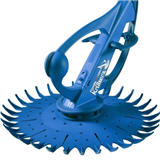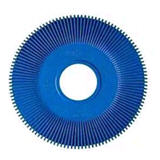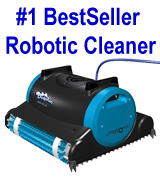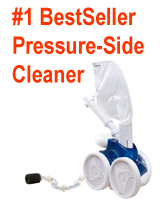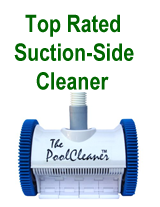Kreepy Krauly Pool Cleaners
Your
source for Kreepy Krauly, Aquabot, Polaris and
other brands of automatic pool
cleaners
Kreepy Krauly
Home |
Kreepy Krauly Troubleshooting |
Dolphin Pool Cleaning Robot | Aquabot Robotic Inground Cleaner |
Aquabot
Turbo Pool Cleaner Review |
Automatic Swimming Pool Cleaners By
Brands |
Pool Preparation and Assembling
Your Kreepy Krauly Pool
Cleaner |
Installing Your Kreepy Krauly Pool
Cleaner |
Kreepy Krauly Optional Vacuum Line
Installation I
Kreepy Krauly Troubleshooting
Tips |
Kreepy Krauly
Parts List |
Kreepy Krauly
Maintenance |
Kreepy Krauly Customer Service
| Kreepy Krauly Hose
and
Accessories
Dolphin Nautilus Pool Cleaning RobotAn automated pool cleaner is a robotic vacuum cleaner
intended to collect debris and sediment from swimming pools. Most models use a random motion pattern to ensure that
the entire floor surface is eventually covered. Electronic or Robotic Why Robot ? Different cleaning methods have different efficiency
coefficients as well as costs. The main advantages (Pros) and drawbacks(Cons) for each
cleaning method are as follows: Suction Cleaner Pressure Cleaner In-Floor System Dolphin System Dolphin Nautilus Pool Cleaning Robot
Specs |
. Kreepy Krauly Home
. Troubleshooting Your Kreepy
Krauly
. Go to the
Kreepy Krauly Pool Store
Top Rated
Robot
Dolphin Nautilus
Robotic Pool Cleaner
Top Rated
InGround
Kreepy Krauly for
Vinyl-Fiberglass Pools
Kreepy Krauly for
Concrete-Gunite Pools
Top Rated
AboveGround
Kreepy Krauly E-Z Vac
Hayward
700
Top Rated High End
Polaris 9300
Aquabot Turbo
T4RC
Top Rated Mid Range
Polaris 360
Kreepy Krauly
Sand Shark
The Pool Cleaner
2X
Kreepy Krauly Online Reference Manual
. A Kreepy
Krauly Welcome
. Pool
Preparation and Assembling Your Kreepy Krauly Pool Cleaner
.
Installing Your Kreepy Krauly Pool Cleaner
.
Kreepy Krauly Optional Vacuum Line Installation
.
Kreepy
Krauly Troubleshooting Tips
. Kreepy Krauly Parts
List
. Kreepy Krauly Maintenance
.
Kreepy
Krauly Customer Service
. Kreepy Krauly
Hose and Accessories
More Options
. Dolphin Pool
Robot
. Aquabot Pool
Robot
. Aquabot
Review
. Pool Cleaners By Brands
. About Us
. Contact Us
.
Privacy
Policy
. Site Map
Kreepy Krauly
Home |
Kreepy Krauly Troubleshooting |
Dolphin Pool Cleaning Robot | Aquabot Robotic Inground Cleaner |
Aquabot
Turbo Pool Cleaner Review |
Automatic Swimming Pool Cleaners By
Brands |
Pool Preparation and Assembling
Your Kreepy Krauly Pool
Cleaner |
Installing Your Kreepy Krauly Pool
Cleaner |
Kreepy Krauly Optional Vacuum Line
Installation I
Kreepy Krauly Troubleshooting
Tips |
Kreepy Krauly
Parts List |
Kreepy Krauly
Maintenance |
Kreepy Krauly Customer Service
| Kreepy Krauly Hose
and
Accessories
| About Us Contact Us Privacy Policy
Copyright 2010. All Rights
Reserved
www.kreepykrauly.org
